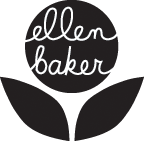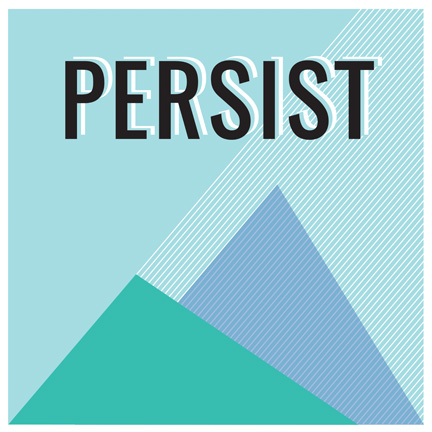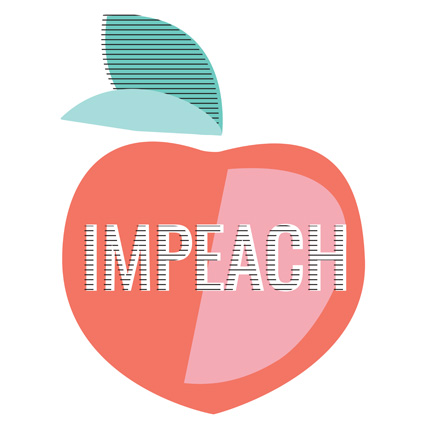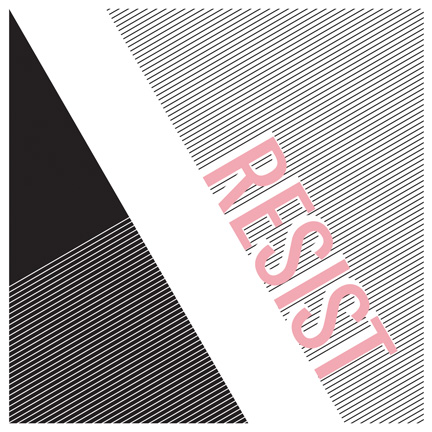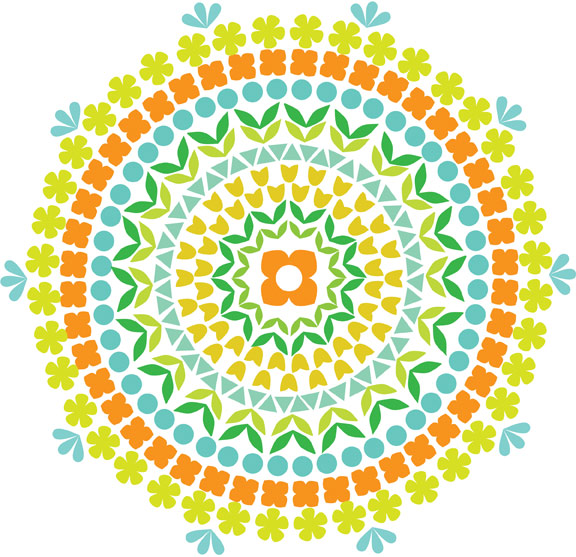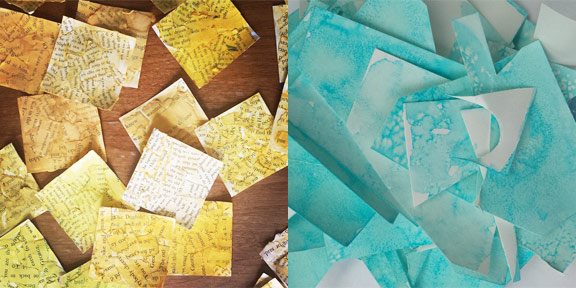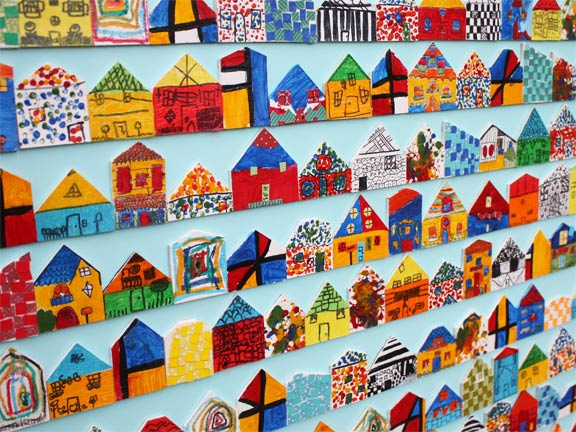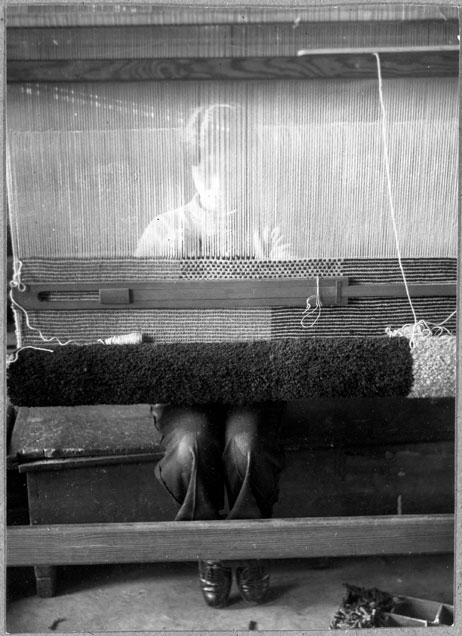
Michiko Yamawaki at the loom, 1930-1932, photograph by Hajo Rose.
I’ve been reading Bauhaus Weaving Theory, which is a fascinating look at the women of the Bauhaus. Women were relegated to the lowest status and assigned to the weaving house, yet they experimented, innovated, and wrote about their work to create a theoretical framework for weaving. Just as the Bauhaus reacted to modern industrialization of the twentieth century, the contemporary craft movement still struggles to define handmade.
Etsy uses the terms “hand-altered” or “hand-assembled” to distinguish the things that are handmade from beginning to end from those that may have mass-produced components. So perhaps you grow your own cotton and spin it into thread, weave it into fabric, dye it with natural dyes made from your vegetable garden, then hand sew it into a finished piece. That’s truly handmade, yet incredibly impractical. Although I am wary of irresponsible manufacturing, I think we should take advantage of technology. Obviously machines can weave fabric much faster than a traditional loom.

5 Chöre” (5 Choirs) Jacquard Wall Hanging by Gunta Stölzl, 1928.
For years, I’ve struggled with the notion of being a commercial artist. The designs are meant to appeal to a wide audience and yet fabric is malleable, transformed by the end user. It’s this very flexibility of fabric that makes it unique in the world of surface design. Rather than designing plates or chairs, whose end use is clear and predetermined, fabric by the bolt is ready to be cut and made into your clothing, bags, curtains, pillows, or whatever you choose. The consumer is the final creator. I love seeing people make unique, unexpected things with my fabric designs.
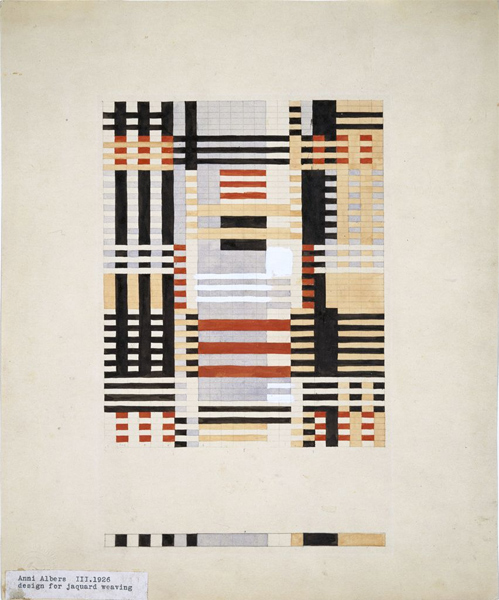
Study for jacquard weaving by Anni Albers, 1926.
In this regard, fabric design is merely one element of the finished product. The fabric started in the dirt, was grown from cotton and flax, was met by many hands and machines along the way, transported over the ocean, and has ended up on your cutting table. When we consider the process from beginning to end, we can appreciate our global interconnectedness and strive to be more responsible consumers.
Perhaps I’ve been too much in my head the last few months and need to just make things instead. My daughter was having an ice skating lesson the other day (with the outside temperature around 100 degrees) and she said that she sometimes starts thinking about why she’s there, wondering what it all means, then another voice tells her to just skate. She’s a pretty deep eleven-year-old, by the way. We should probably all listen to that voice that tells us to think less and just skate.
Links:
The crafts, understood as conventions of treating material, introduce another factor: traditions of operation which embody set laws. This may be helpful in one direction, as a frame for work. But these rules may also evoke a challenge. They are revokable, for they are set by man. They may provoke us to test ourselves against them. But always they provide a discipline which balances the hubris of creative ecstasy.
—Anni Albers, Work with Material, 1938.
Gunta Stölzl, Weaving at the Bauhaus, 1926.
Etsy’s definition of Handmade.
Video of Fabric Manufacturing Process.
